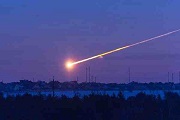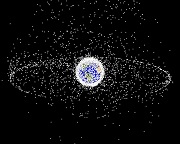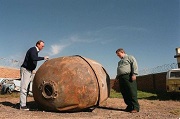ALERT: Huge Solar Storm will reach Earth on Sep 12-13, 2014
Be aware of possible communication disruptions, GPS errors, power outages, and beautiful auroras.
Consider avoiding flights and high-mountain activities.
USA Today reports
Radiation

Sun:
Solar light is essential for life, but solar wind brings streams of
ionizing particles which can harm our biology and technology. Solar particle streams
are more intense when Sun is more active.
Understanding solar magnetic activity and forecasting space weather is important for life
and economy. There is a historical record of a person killed by an electric shock
induced by a solar flare in an operating equipment.

Galaxy:
Galactic high-energy radiation comes to Earth from all directions.
It is an echo from distant supernova explosions or galactic black holes.
This radiation is modulated by the solar activity and is lower when Sun is more active.
During solar activity minima galactic radiation is a dominant source of space radiation.
High-energy particles create showers of secondary particles.
Galactic cosmic rays are considered by Federal Aviation Administration (FAA) as
ionizing radiation hazardous for aircraft crew members.
|
Impacts

Meteoroids:
Solar system has eight major planets, their satellites, and millions of minor bodies,
such as asteroids, comets, and their fragments - meteoroids. Tons of meteoroid matter
falls from space on Earth every day. Bigger ones, such as an infamous Chelyabinsk meteorite
can harm people and damage constructions. It is essential for us to discover and monitor
all potentially hazardous asteroids and meteoroids which can hit Earth.

Comets:
One may think comets don't hit Earth too often. Indeed, perhaps the latest collision with
a comet was the 1908 Tunguska event. Most recently, in 1994, Shoemaker-Levy 9 comet
had collided with Jupiter. On October 19, 2014, Siding Spring comet will pass dangerously
close to Mars surface - at only 1/3 the Earth-Moon distance. Discovering comets early
and predicting their orbits is important for our survival.
|
Space Junk

Satellites:
Near-Earth space is crowded with both functioning and dead satellites. Eventually,
some of them fall on Earth or collide with other satellites and create space debris.
Such debris are also created by military tests of anti-satellite missiles.
Somewhat exaggerated danger of space junk was shown in the Gravity film. In fact,
there have been already two substantial in-space accidents between spacecrafts and
space debris. In addition to an economical damage
of billions dollars, space debris is an increasing danger for spacecrews. Monitoring
space junk and appropriate cleaning the near-Earth space are necessary measures.

Space dumps:
Some spacecrafts were crushed onto surfaces of other Solar system bodies. Even though
this helps (in some case) to learn about the internal composition of the planetary body,
creating space dumps outside Earth can potentially harm future exploration
and colonization of the Solar system. The humanity needs to come up with a better plan
of space recycling.
|
Sign up for Space Hazard Alerts!
We send alerts on potentially hazardous space events.
If you are interested in receiving these alerts
please leave us your name and contact information which will be used only
for this purpose.





